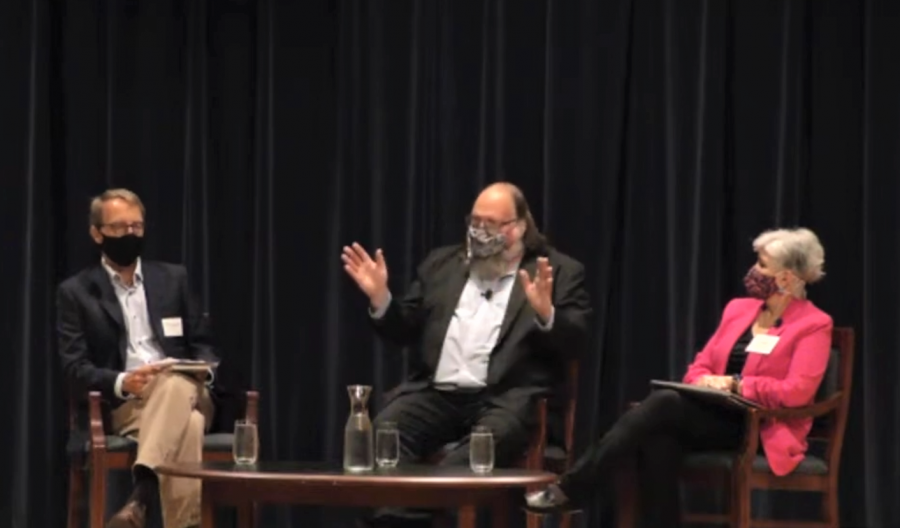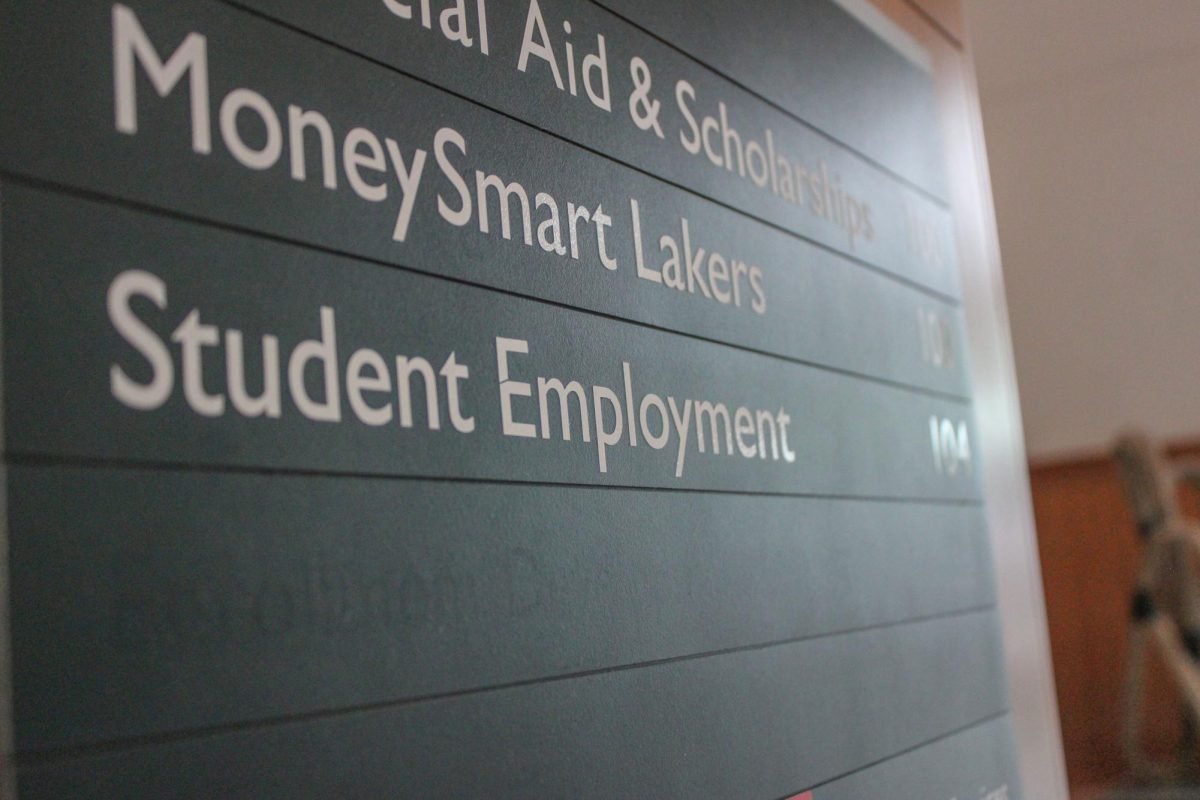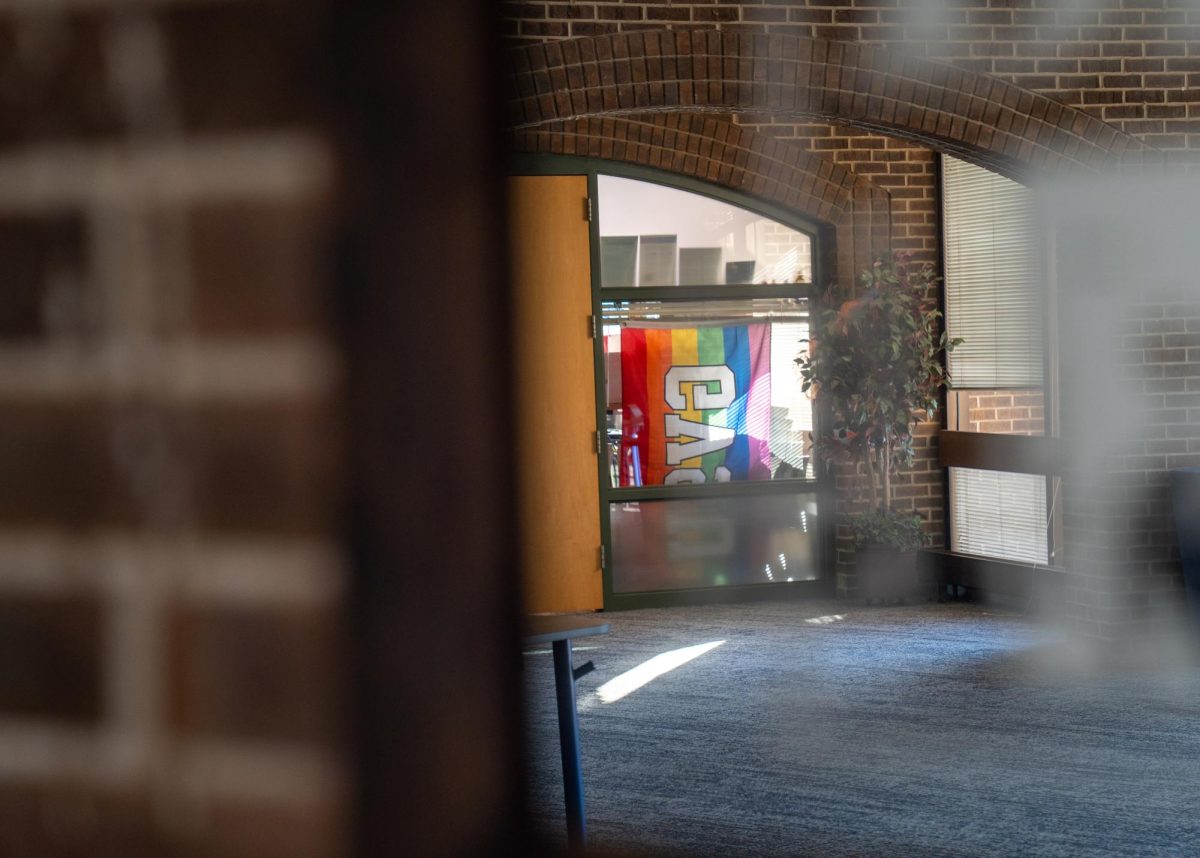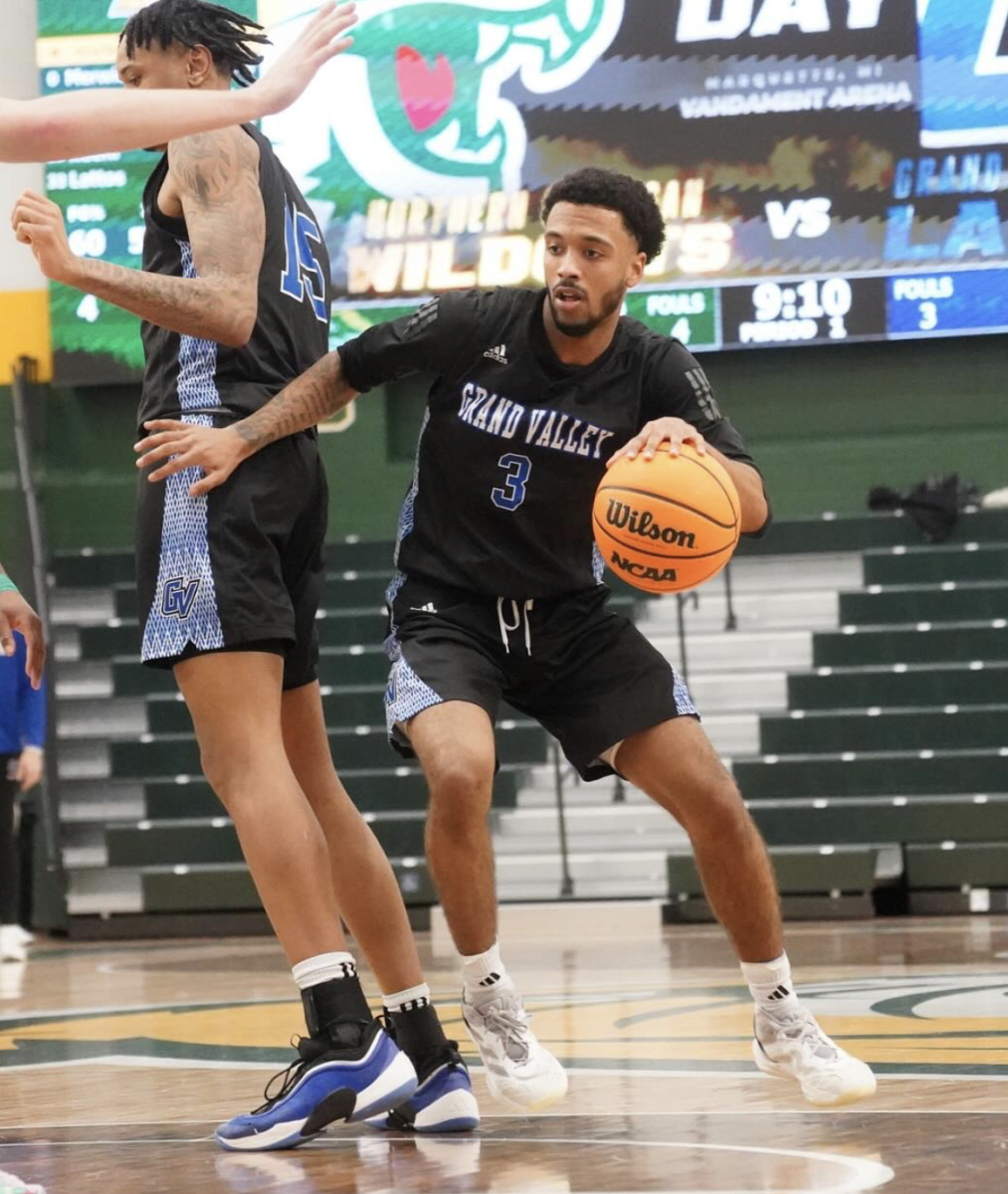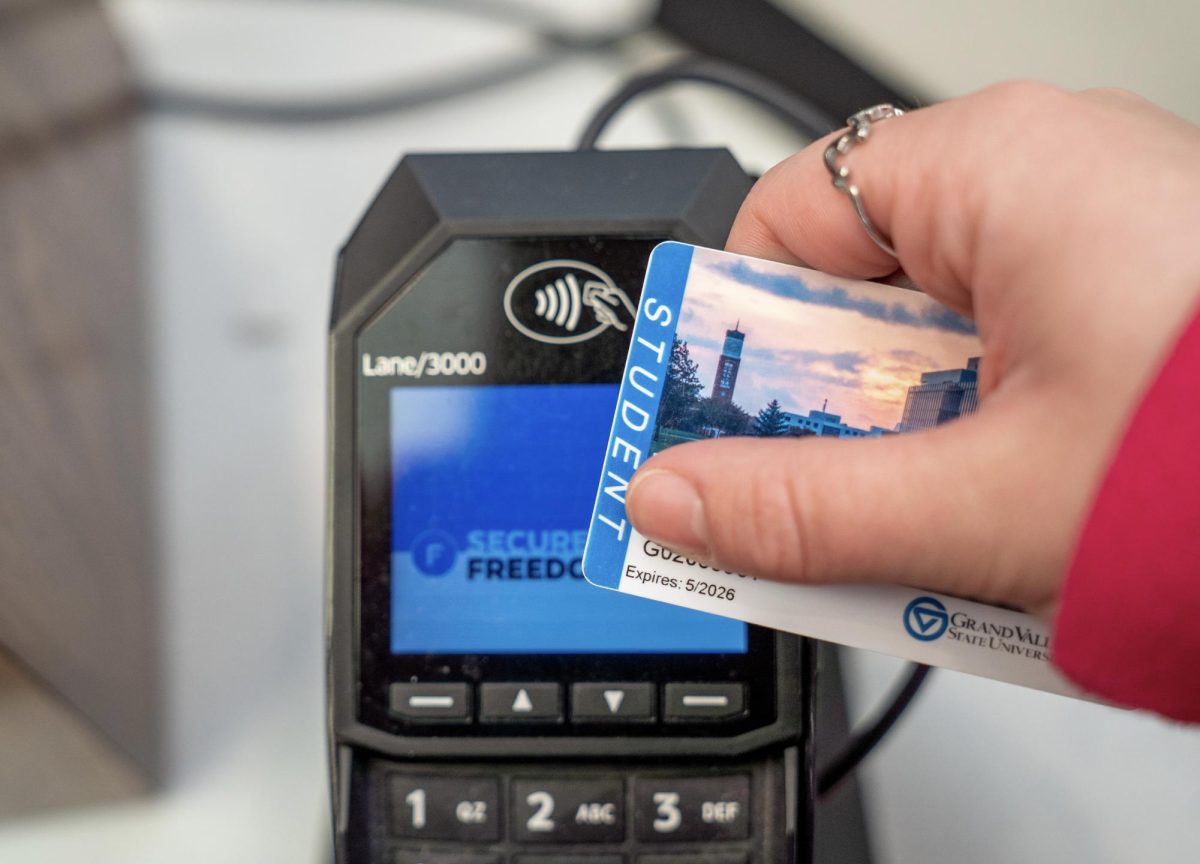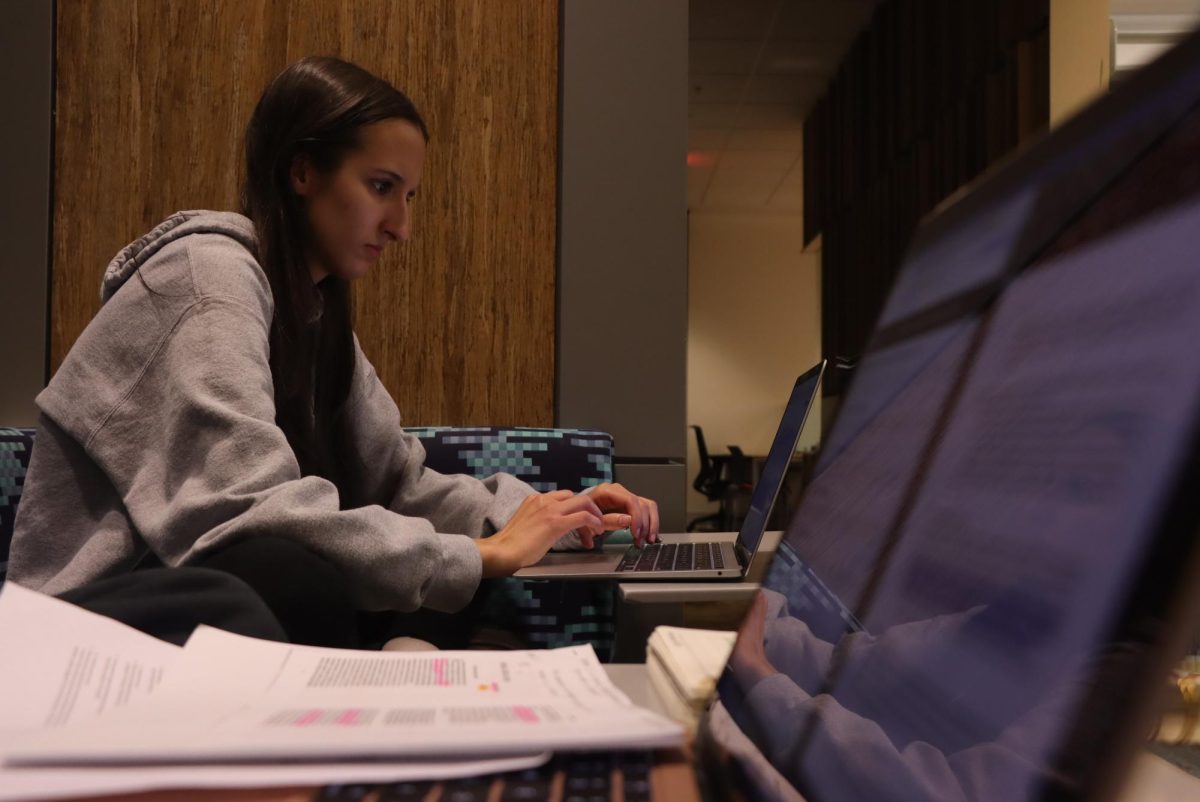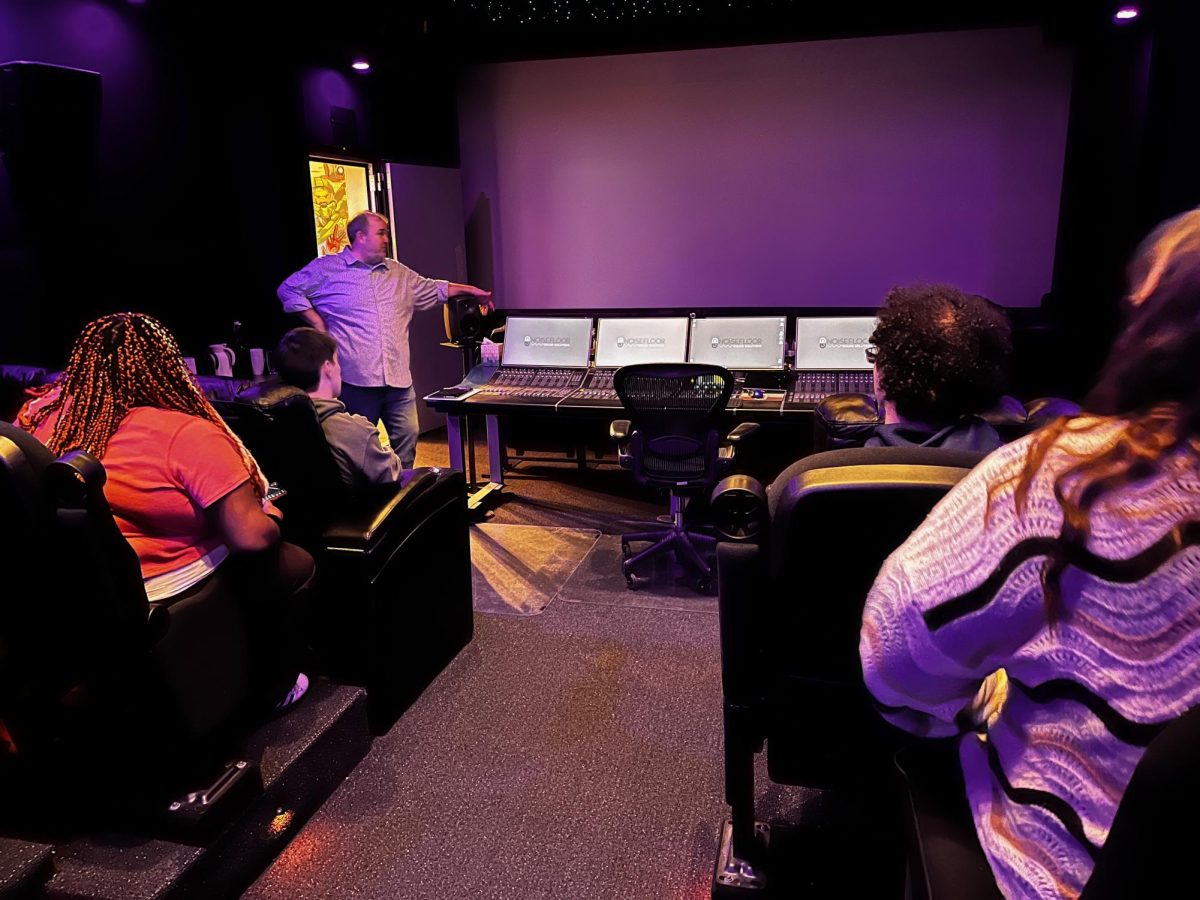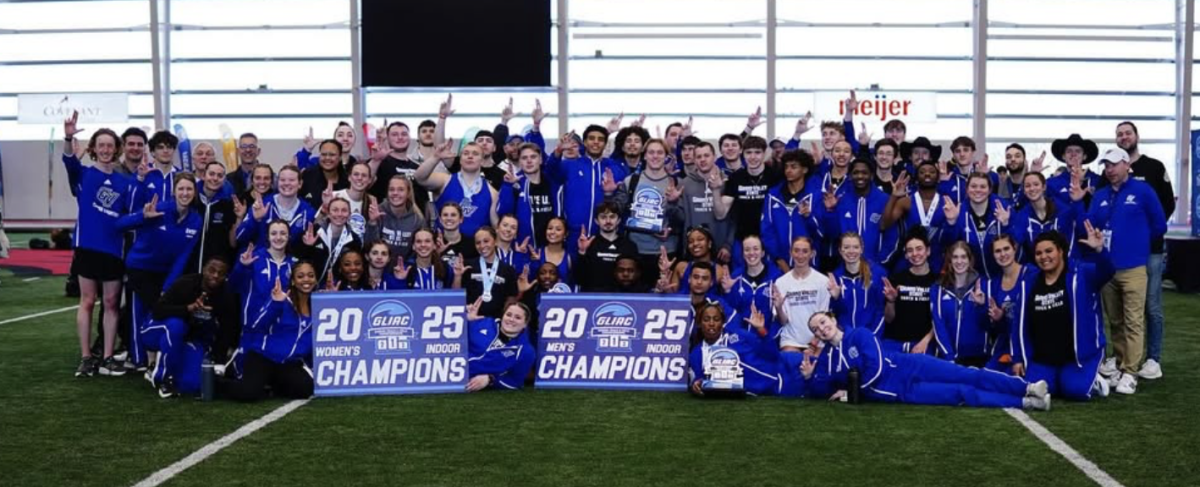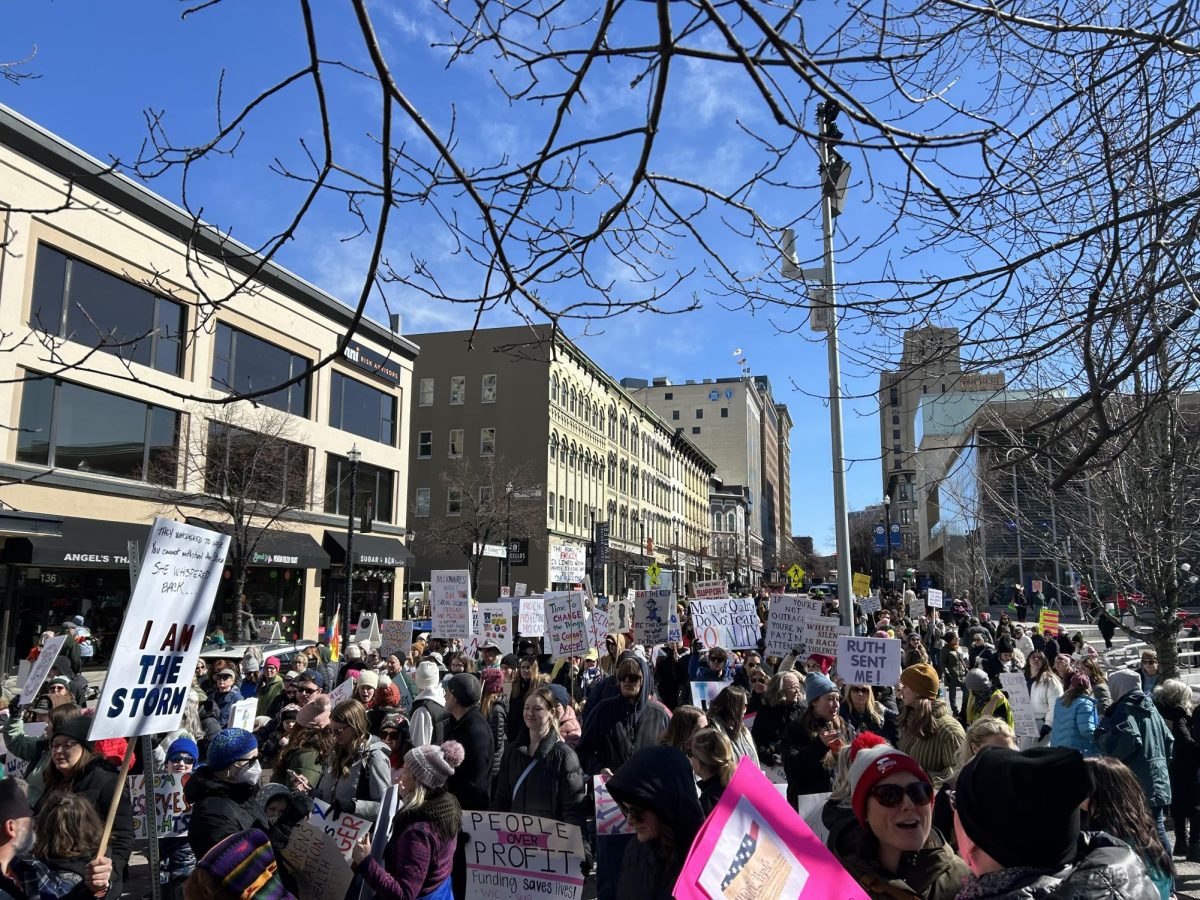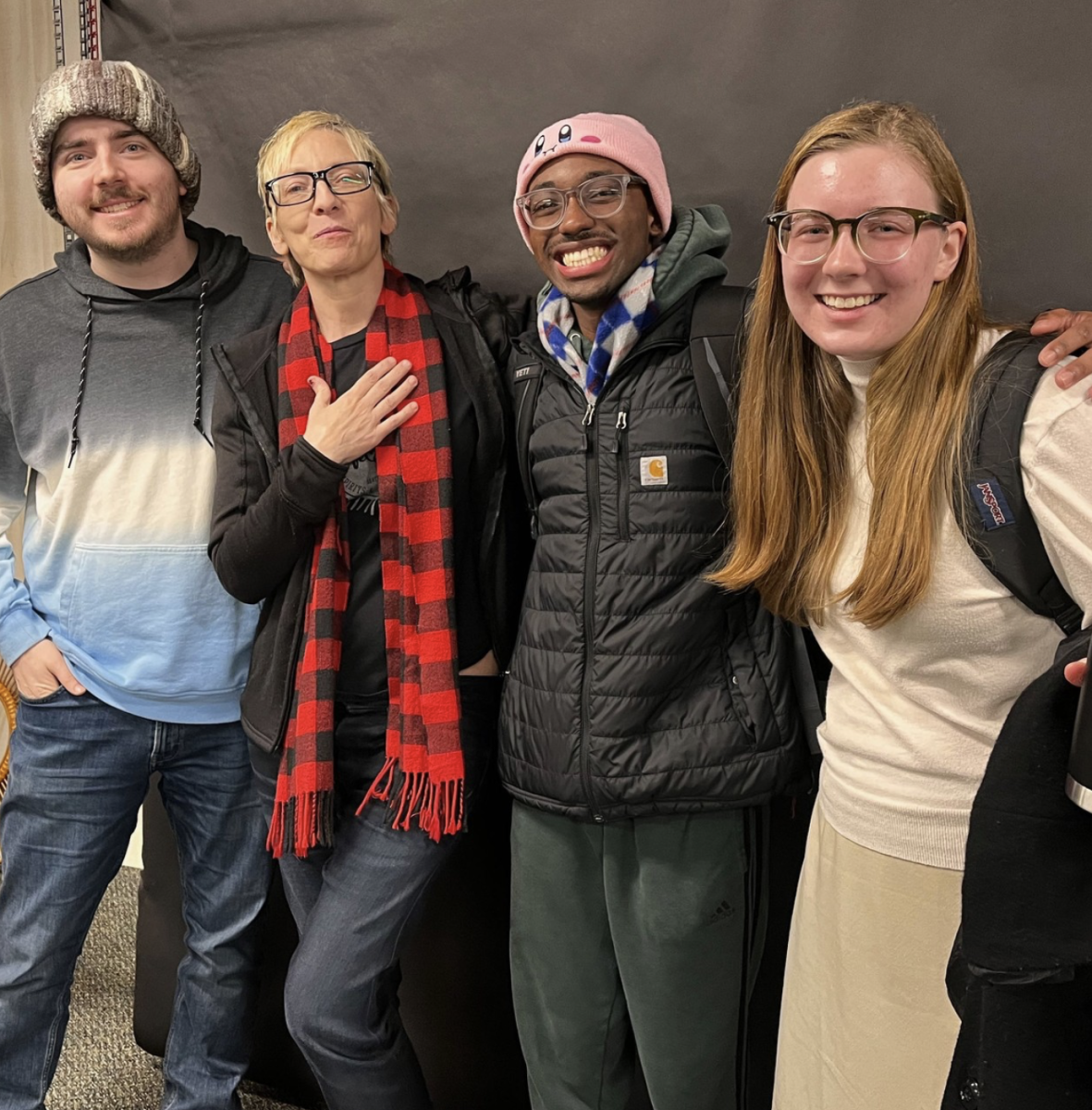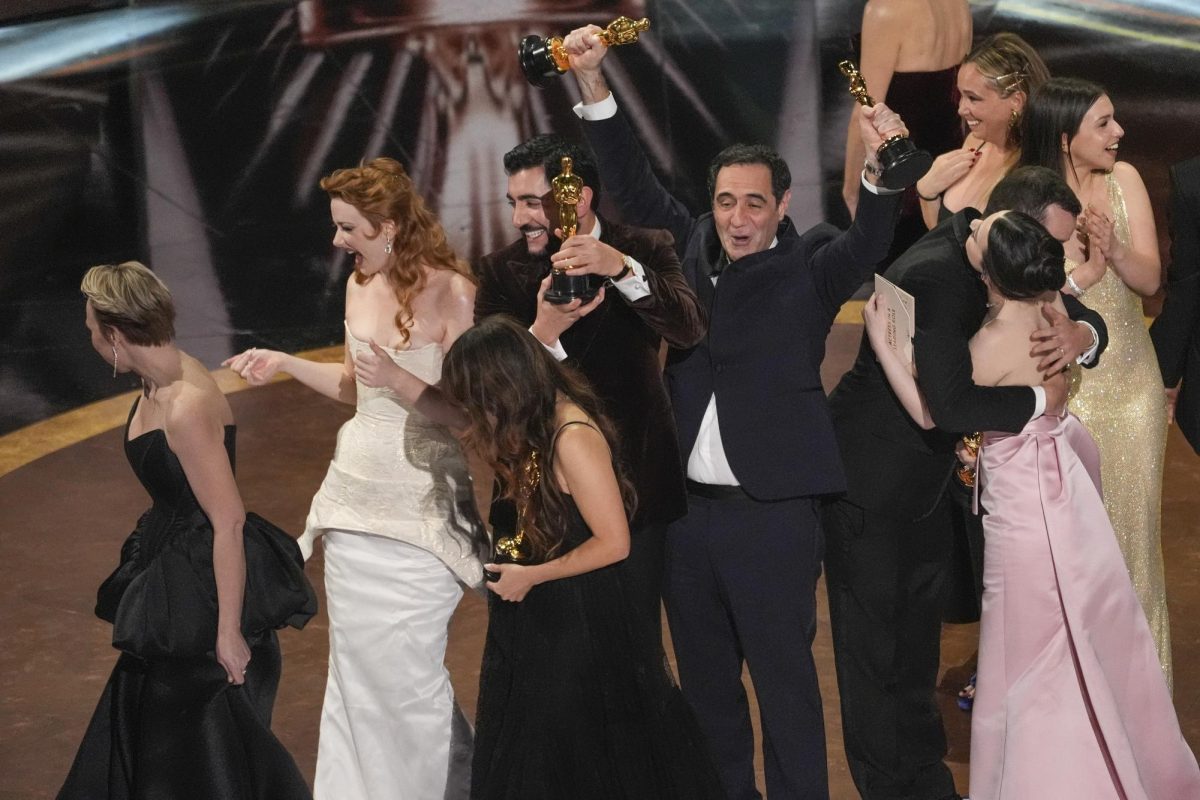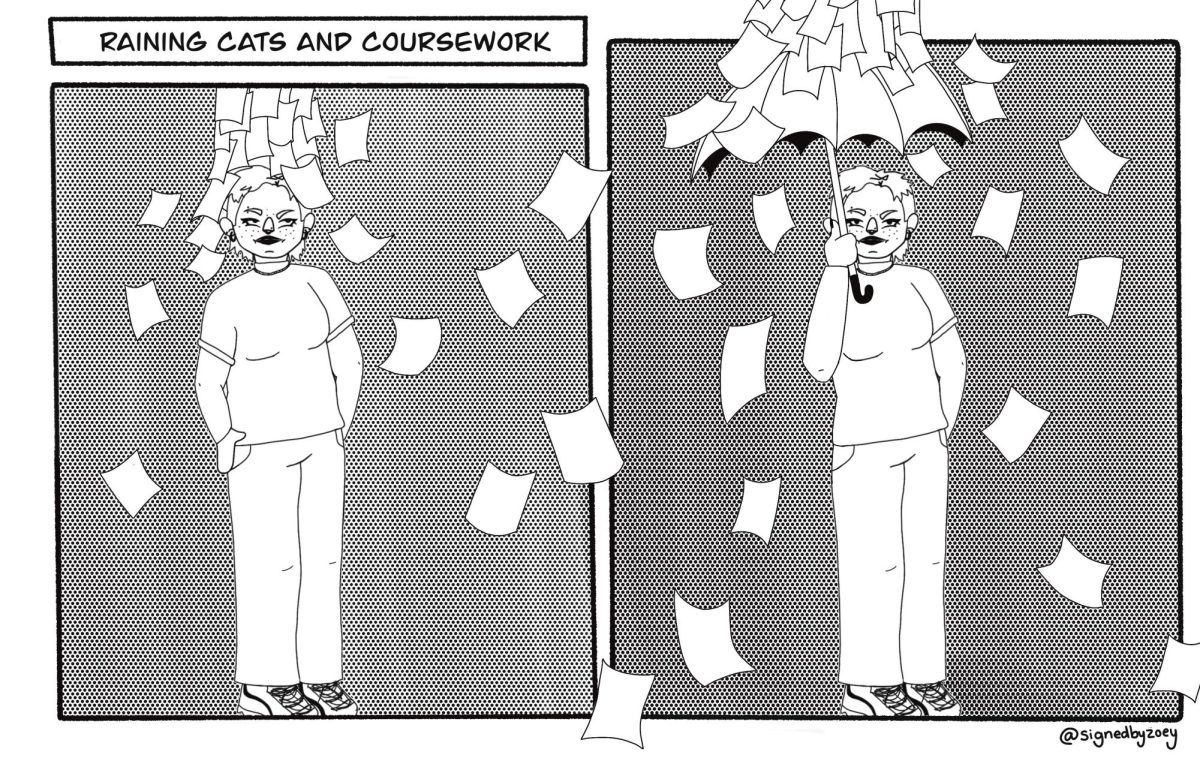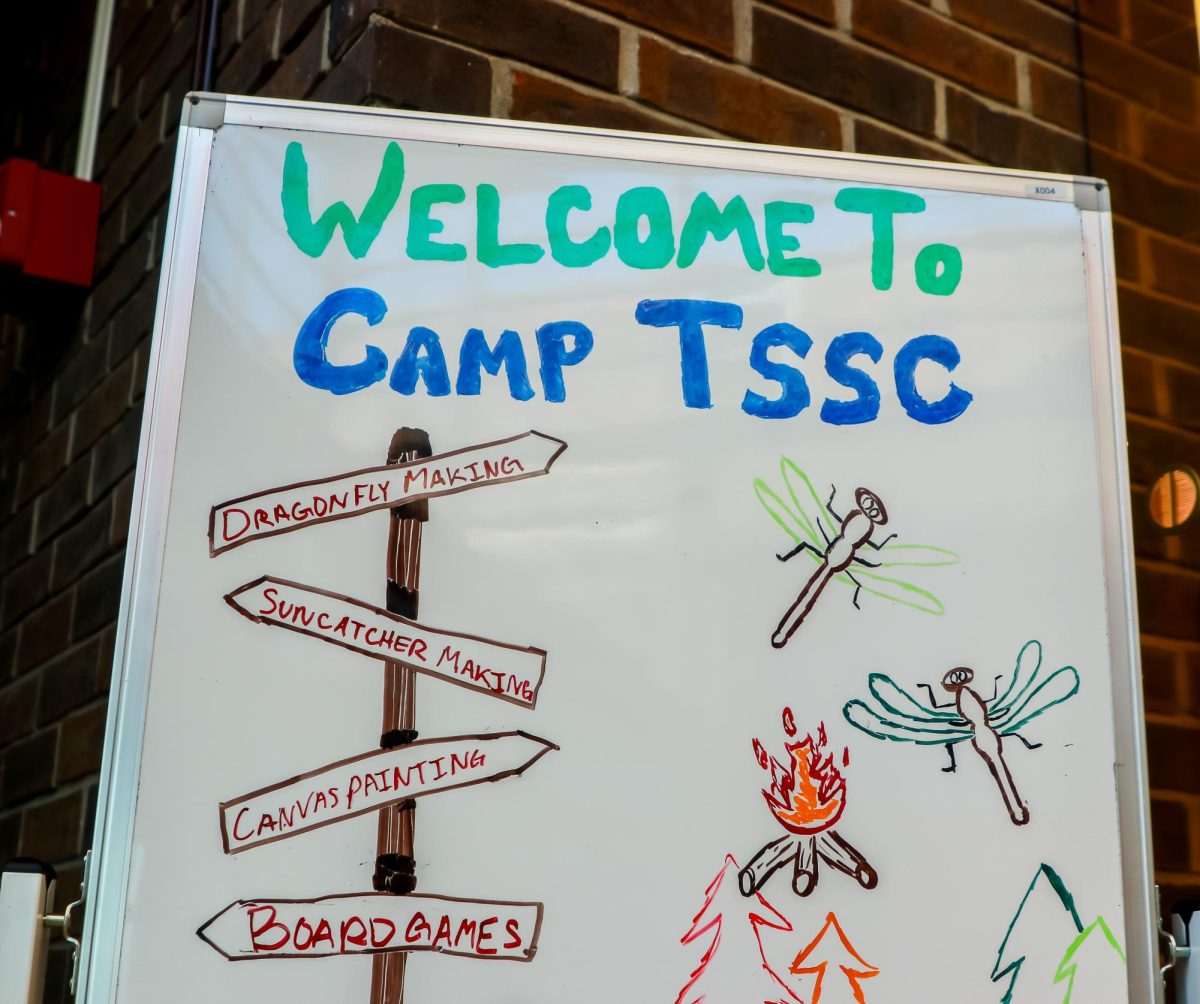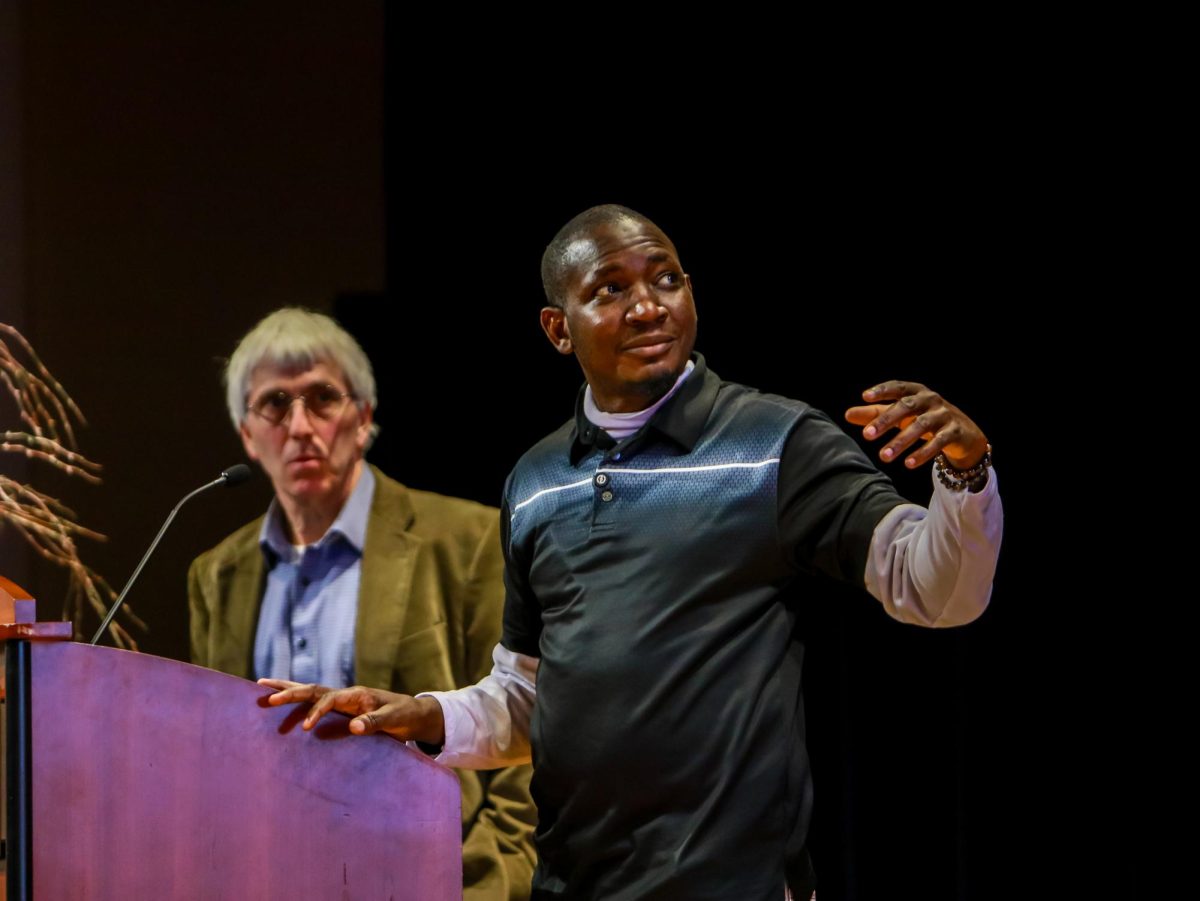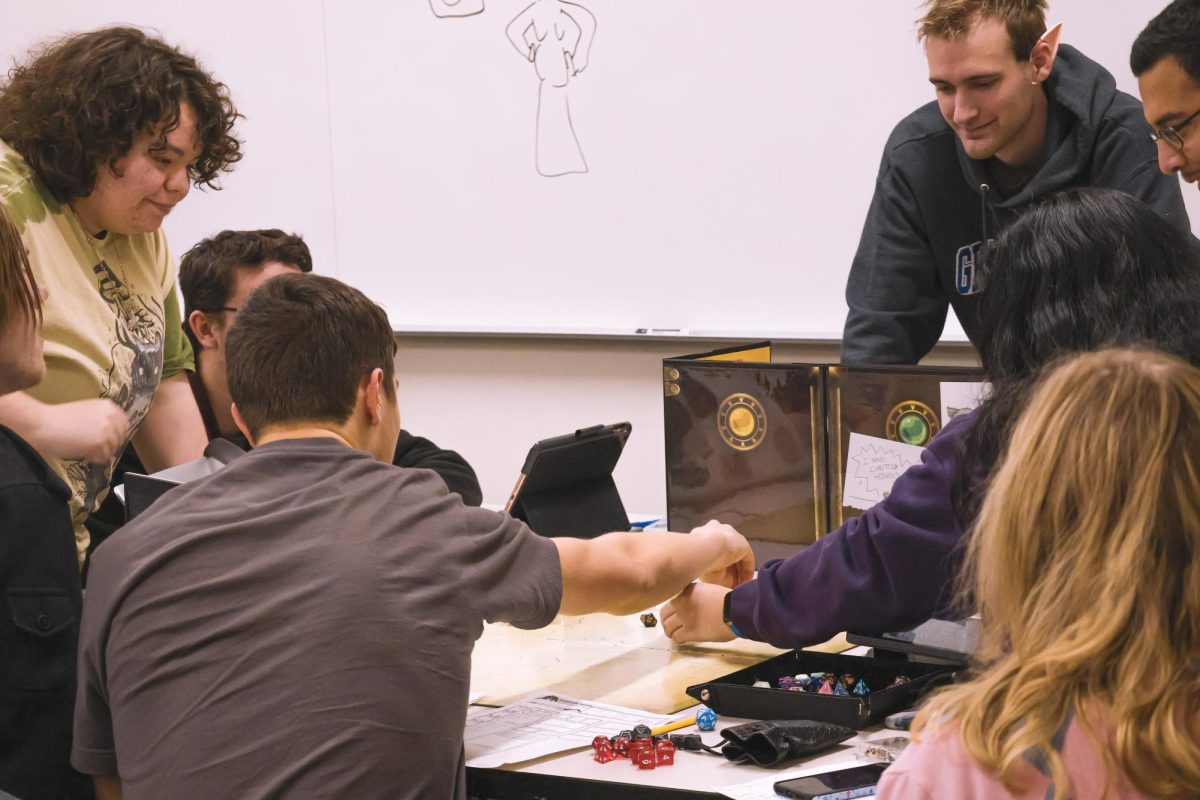Hauenstein discusses: why don’t Americans trust their institutions?
Darren Wahlof, chair of Grand Valley’s political science department, left. led the panel discussion between Ethan Zuckerman, center, and Linda Chavez, right. (Courtesy / Hauenstein Center)
Sep 7, 2021
According to the Pew Research Center, 77% of Americans trusted the federal government in 1964. In 2020, that number was only 20%. This isn’t a partisan issue; the share of Americans who say they trust the government hasn’t risen above thirty percent since the final years of the George W. Bush presidency, staying concerningly low from Republican to Democrat to Republican again.
“What’s interesting to me, is that when you ask Americans about different institutions— not just the government but banks, churches, any large body— you get similar results,” said Ethan Zuckerman, a professor of public policy at the University of Massachusetts Amherst. “Not only is our confidence in these systems very low, but it has fallen sharply off since the 1970s and 1980s.”
Zuckerman, who recently published his book “Mistrust: Why Losing Faith in Institutions Provides the Tools to Transform Them,” was invited to Grand Valley State University by the Hauenstein Center for Presidential Studies on Sept. 2 to speak on his research into institutional mistrust.
“The people that I saw this the most in were my students, at that point at MIT,” Zuckerman said. “They cared passionately about the world that they were living in, and they really wanted to find a way to transform it, but they were incredibly skeptical about their ability to do so through the ways they’d been told civics worked. The idea that going to the polls, or even going onto the streets protesting, would have real meaningful change in the world— it was quite foreign to them. I started to take them very seriously, and wanted to figure out what was going on.”
Zuckerman’s research into potential causes and solutions for this crisis was counterpointed by Linda Chavez, a senior fellow at the Niskanen Center, a libertarian think tank named after an economic advisor of Ronald Reagan. Chavez argued, from the lens of her personal experience, that this crisis of mistrust was started by the progressive left during the Civil Rights Movement.
“How is it that a country as prosperous as ours, as educated as ours, could have a trajectory of distrust since the 1960s?” Chavez said. “I look at the period of the 1960s and 1990s, and I see a country that was becoming much more diverse, and I see that the left was not interested in pulling together as one nation, indivisible, with a common culture and common language. That kind of tribalism that took place on the left is now in the right as well, a tribalism based on ideology and political affiliation.”
As to her initial question, Zuckerman’s research provided a number of potential answers.
“In the 1960s, very few people went to college, a lot of people didn’t finish high school,” Zuckerman said. “We have many, many more citizens who have been taught critical thinking skills. Maybe we’re simply becoming more skeptical citizens. Maybe it’s the media. We know in the United States that after Vietnam and Watergate, the press got much more aggressive, much less likely to let things slide. Inequality has risen very sharply in the United States during this time period, and it’s possible that the system that we’re living within is not working well for people.”
Zuckerman also noted that it can take a long time for an institution to regain trust after a failure, and the last few decades have seen a great number of public shake-ups in that regard, from the Great Recession to the uncovering of widespread abuse in the Catholic Church.
“It’s okay to lose faith in institutions if those institutions are failing,” Zuckerman said. “What’s not okay is to disengage. You actually have to engage and fight even harder to figure out how to transform those institutions.”
Zuckerman outlined two tools for approaching how to do this. The first was deciding where an individual stand in regards to a failing institution. There’s the radical institutionalist standpoint, transforming it from within; counterdemocracy, pressuring it from the outside to try and get it to behave better; and disruption, the radical work of deciding that maybe you need something different in its place. The second tool is the four “levers” of society: laws, norms, technology and markets.
“It’s amazing if people can go and pass laws,” Zuckerman said. “And it’s critically important— that’s how we get advances in society like gay and lesbian rights. But it’s also critically important that people figure out how to change social norms. Movements like Me Too and Black Lives Matter aren’t so much about changing laws as they are about changing hearts and minds. We’re seeing incredible creativity with people using markets and technology to make progress on issues like climate change and privacy.”
The argument that Zuckerman outlined didn’t advocate for replacing or repairing specific institutions; rather, his goal was that everyone find their own efficacy, as people need to understand the tools for change available to them so that they don’t become disengaged.
“The way I view these questions of distrust is ‘do I think this institution listens to me, or people like me?’” Zuckerman said. “Do I think it is accountable to me? That’s the way that I think we want to understand mistrust. The real question is, am I capable of influencing this institution?”
For those who couldn’t attend, the recording of the event is available to watch at this address: www.youtube.com/watch?v=oGlFauF5_L4.





